
The Sillaginidae, commonly known as the smelt-whitings, whitings, sillaginids, sand borers and sand-smelts, are a family of benthic coastal marine fish in the order Perciformes. The smelt-whitings inhabit a wide region covering much of the Indo-Pacific, from the west coast of Africa east to Japan and south to Australia. The family comprises only five genera and 35 species, of which a number are dubious, with the last major revision of the family in 1992 unable to confirm the validity of a number of species. They are elongated, slightly compressed fish, often light brown to silver in colour, with a variety of markings and patterns on their upper bodies. The Sillaginidae are not related to a number of fishes commonly called 'whiting' in the Northern Hemisphere, including the fish originally called whiting, Merlangius merlangus.

The Gangetic whiting, Sillaginopsis panijus, is a species of inshore marine and estuarine fish of the smelt-whiting family, Sillaginidae. It is the most distinctive Asian member of the family due to its flattened head and trailing dorsal fins. Although first described in 1822, it was not placed in its own genus until 1861 when Theodore Gill erected Sillaginopsis, a genus which is still monotypic. Gangetic whiting are of minor commercial importance along the Southeast coast of the Asian continent where it inhabits protected areas.

The oriental trumpeter whiting, Sillago aeolus, is a widely distributed species of benthic inshore fish in the smelt-whiting family. The species ranges from east Africa to Japan, inhabiting much if the southern Asian and Indonesian coastlines. Its morphology is very similar to other species within the genus Sillago, with a long, compressed body and silvery overall colour. It can be distinguished from its relatives by colour patterns and particularly swim bladder morphology, which helps define most species of Sillago. S aeolus is a benthic predator, consuming a variety of crustaceans and polychaetes. As with most members of the smelt whiting family, it is important to small coastal fisheries in various areas of its range.

The shortnose whiting, Sillago arabica, is a recently described and poorly known species of inshore marine fish of the smelt whiting family Sillaginidae that inhabits only the Persian Gulf. S. arabica is similar in morphology to other sillaginids, although has a distinctive shortened snout which gives the species its common name. This species is of no current interest to local fisheries, although beach seines may take minor amounts of this species.

The Asian whiting, Sillago asiatica, is a species inshore marine fish in the smelt whiting family, Sillaginidae, distributed along the Asian coastline from the Gulf of Thailand to Taiwan. The Asian whiting's appearance is very similar to other closely related species in the genus Sillago, with swim bladder morphology and ray counts of fins the most reliable identifying features. The species inhabits slightly deeper water than many of the sillaginid species its distribution overlaps, forming an important part of the whiting fishery in the countries within its range.

The slender whiting is a poorly known species of inshore marine fish of the smelt whiting family, Sillaginidae that has a distribution limited to the Persian Gulf only. The Slender whiting, like most sillaginids requires careful study to determine its identity, with ray and vertebrae counts as well as swim bladder morphology distinguishing features. This inshore species of fish is commonly taken by fishermen using beach seines and is sold fresh in local markets.

Boutan's whiting, Sillago boutani, is a poorly understood species of coastal marine fish of the smelt-whiting family Sillaginidae that inhabits the waters of the Gulf of Tonkin and south eastern China. Like most sillaginids, the species inhabits areas populated with a number of other whiting species of similar appearance, causing the species to often be misidentified as the well known Sillago sihama, and for this reason its biology is poorly known. The species is taken by seine net in Vietnam and is often exported to Japan.

The western trumpeter whiting, Sillago burrus, is a species of marine fish of the smelt whiting family Sillaginidae that is commonly found along the northern coast of Australia and in southern Indonesia and New Guinea. As its name suggests, it is closely related to and resembles the trumpeter whiting which inhabits the east coast of Australia and is distinguishable by swim bladder morphology alone. The species inhabits a variety of sandy, silty and muddy substrates in depths from 0 to 15 m deep, with older fish inhabiting deeper waters. Western trumpeter whiting are benthic carnivores which take predominantly crustaceans and polychaetes as prey. The species reaches sexual maturity at the end of its first year of age, spawning in batches between December and February The species is taken as bycatch with other species of whiting and shrimps in Australia.

The club-foot whiting, Sillaginopodys chondropus,, the only member of the genus Sillaginopodys, is a coastal marine fish of the smelt whiting family Sillaginidae that inhabits a wide range including west Africa, India and the northern Indonesian Archipelago. The species is unique in the morphology of the pelvic spine and fin, making identification of the species easier than most of its relatives. The species is of minor commercial importance, taken by seine net and marketed fresh throughout its range.
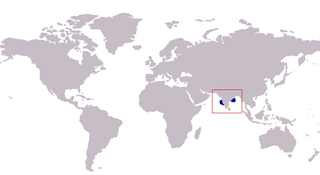
The Indian whiting is a poorly known species of coastal marine fish of the smelt-whiting family Sillaginidae. The species was named in 1985, having previously being misidentified as another species of Sillago, S. parvisquamis. The Indian whiting inhabits the east and west coasts of the Indian subcontinent, apparently not extending to the southern tip of India. Like all sillaginids, it is benthic in nature, living in depths to 30 m where it is caught by fishermen alongside other species of Sillago.

The bay whiting is a species of coastal marine fish of the smelt-whiting family, Sillaginidae. The bay whiting's range extends throughout the west Indian Ocean, including northern Australia, Thailand, India and Taiwan, where it inhabits protected waters. It is benthic in nature, preying on shrimps, polychaetes and molluscs, however little else is known of its biology. Bay whiting are an important part of some inshore fisheries around Australia and Asia, where subsistence and commercial fishermen regularly take the species.

The Thai whiting, Sillago intermedius, is a species of coastal marine fish of the smelt-whiting family Sillaginidae. The Thai whiting ranges from the west coast of India to the Gulf of Thailand in the east, inhabiting silty substrates in shallow waters. First identified in 1977 from a specimen found in a fish market, the species has had little research performed on its biology, and is frequently misidentified as Sillago sihama or Sillago maculata Thai whiting are commonly caught by fishermen throughout their range and are marketed fresh locally.
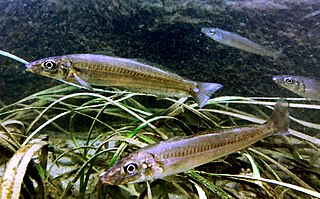
The Japanese whiting, Sillago japonica, is a common species of coastal marine fish belonging to the smelt-whiting family, Sillaginidae. As suggested by its name, the Japanese whiting was first recorded from Japan in 1843, but has subsequently been found to extend to Korea, China and Taiwan.
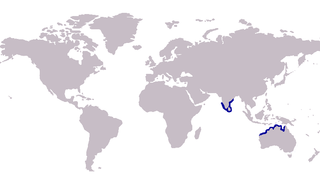
The mud whiting, Sillago lutea, is a species of coastal marine fish in the smelt-whiting family Sillaginidae. The mud whiting was first described in 1985 and is currently known from the north west coast of Australia and the Indian coast.

The rough whiting, Sillago nierstraszi, is a dubious species of coastal marine fish in the smelt-whiting family Sillaginidae. The species is known only from the holotype which was collected in 1941 on the south coast of Papua New Guinea, but is thought to be lost. S. nierstraszi is currently a valid species, although during his revision of the sillaginids, Roland McKay suggested the species to be a senior synonym of Sillago analis.
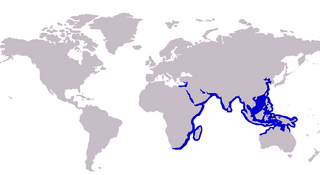
The northern whiting, Sillago sihama, is a marine fish, the most widespread and abundant member of the smelt-whiting family Sillaginidae. The northern whiting was the first species of sillaginid scientifically described and is therefore the type species of both the family Sillaginidae and the genus Sillago. The species is distributed in the Indo-Pacific region from South Africa in the west to Japan and Indonesia in the east, also becoming an invasive species to the Mediterranean through the Suez Canal. The northern whiting inhabits coastal areas to 60 m, but is most often found in shallow water around bays and estuaries, often entering freshwater. It is a carnivore, taking a variety of polychaetes and crustaceans. The species is of major economic importance throughout the Indo-Pacific. It is most frequently taken by seine nets and cast nets and marketed fresh.

The small-scale whiting, is a species of inshore marine fish of the smelt-whiting family Sillaginidae. The small-scale whiting is very similar in body shape and colour to other species in the genus Sillago, but is distinguished by having 12 or 13 spines in the first dorsal fin compared to 11 in all other species. The species is distributed through parts of the west Pacific Ocean including Japan, Taiwan, Korea and India, inhabiting the tidal flats of major estuaries. It is a benthic predator taking crustaceans, molluscs and annelids. Spawning in the species takes place from May to September, with peaks identified in June and July. The eggs and larvae have been extensively studied in order to distinguish them from the more abundant Sillago sihama. Minor fisheries exist for the small-scale whiting, although it is thought be endangered by habitat loss and pollutionIUCN.
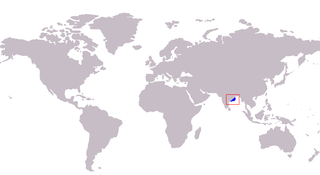
The Soringa whiting, Sillago soringa, is a poorly known species of coastal marine fish of the smelt-whiting family, Sillaginidae. The Soringa whiting is known exclusively from the east coast of India, inhabiting shallow inshore environments, particularly sandy substrates. S. soringa was first described in 1982 by Dutt and Sujatha, with the taxonomic status of the species was questioned by Roland McKay in his review of the Sillaginidae, with similar features to S. asiatica suggesting it is a senior synonym of the latter.

The stout whiting, also known as the yellow-cheek whiting or school whiting, is a species of benthic marine fish in the smelt-whiting family Sillaginidae. Like other sillaginids, it is an elongate, slightly compressed fish, growing to a maximum known length of 30 cm. The stout whiting is endemic to Australia, with the species divided into western and eastern populations, with the western population ranging from Shark Bay to Fremantle and the eastern population from Bustard Head, Queensland to northern New South Wales. The species inhabits deep, sandy continental shelf regions to a depth of at least 70 m. The stout whiting is a benthic carnivore, consuming a variety of polychaetes and crustaceans. The species grows rapidly, and sexual maturity is reached at a length of 13 cm, with spawning occurring between December and March. Juveniles of the eastern population move to protected inshore waters, while those of the western population remain offshore their entire life. Stout whiting are the subject of a major export fishery operating out of southern Queensland and to a lesser extent New South Wales, with fishery authorities limiting the yearly catch to 1000 tonnes in Queensland. Most of the catch is exported frozen to a number of Asian countries, although small quantities are sold in Australia, with the net worth of the fishery values at around 3 million Australian dollars per year.
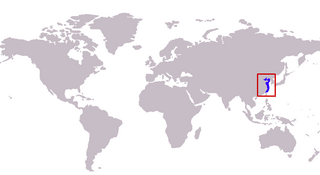
The Chinese sillago is a species of recently described inshore marine fish in the smelt whiting family Sillaginidae. The species is known only to inhabit the coastal waters of China, primarily in estuarine tidal flats. The Chinese sillago was described in 2011 based on morphological and DNA barcode analysis of several specimens. Several detailed anatomic features distinguish it from other sillaginids, with Sillago parvisquamis its closest relative based on phylogenetic analysis. Nothing is known of the ecology or importance to fisheries of the Chinese sillago.




















